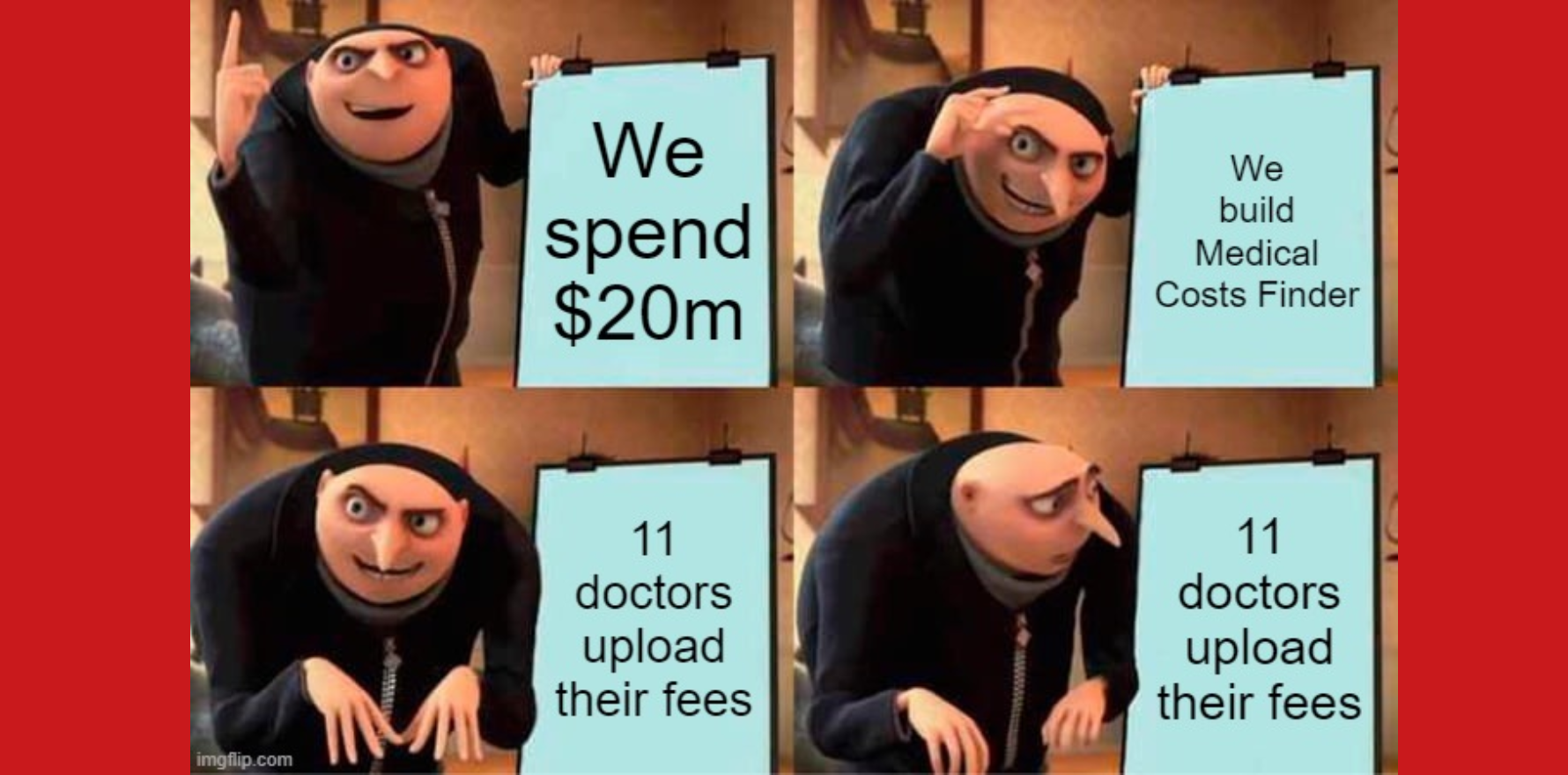Internal medicine has overtaken allergy/immunology as the medical specialty with the lowest bulk-billing rate, while GPs continue to be among the top bulk-billers.
New data on the government’s Medical Costs Finder should put concerns about GP bulk billing to bed, with some specialties revealed to be charging a gap for up to 80% of patients.
It comes as the yearly MBS indexation was revealed to be 3.5%, just under CPI, bringing the patient rebate for a level B consult up by a whole $1.45.
Over the last six months, Canberra has kept a seemingly hawk-like eye on bulk-billing rates in general practice.
What with the press releases to celebrate miniscule rises in the bulk-billing rate, one might assume that GPs were the worst of the worst when it came to cost.
But despite the government being one of the biggest handwringers of all, the Department of Health and Aged Care’s own Medical Costs Finder tells a different story.
While legendarily underutilised by practitioners, the site does update at the start of each financial year with broad-level Medicare data that estimates the average gap fee and bulk-billing rate of individual specialties across certain procedures and consult types.
According to the newly released 2022-23 financial year data, general practitioners bulk billed 72% of patients for a standard level B consult and charged the remainder an average of $40 out of pocket.
This data was captured before the November 2023 introduction of the tripled bulk-billing incentive.
Just four non-GP specialties bulk bill more than 70% of patients for an item 110, which covers an initial professional attendance with a consultant physician following a referral.
The Medical Costs Finder lists the bulk-billing rate and average fee of an item 110 for 20 specialties.
The item was remunerated at $138 in the 2022-23 financial year and does not carry a minimum time requirement. It is now worth $148.
In the bulk-bulling race, clinical genetics came out on top with a bulk-billing rate of 88%, followed by rehab medicine at 84% and oncology at 77%.
Nuclear medicine, at 74%, was the only other non-GP specialty to eclipse GP level B bulk-billing rates.
At the other end of the spectrum were the three lowest bulk billers: internal medicine at 20%, immunology/allergy at 24% and rheumatology at 25%.
To be fair to the immunology and allergy specialists among our readers, 20% is actually a slight improvement on the 2021-22 financial year average of 19%. It is, however, the third year running that the specialty has topped the list of lowest bulk-billing rates.
The 80% of patients who pay a gap are spending big, too; at $195, immunology/allergy has the second-highest average gap fee for an item 110.


Filling out the middle ground were gastroenterology/hepatology at 33%, cardiology at 40% and haematology at 54%.
Higher fees generally tended to correlate with lower bulk billing rates, and vice versa.
Related
In terms of cost, neurology took out the top spot, with patients paying around $212 in gap fees for item 110s.
With a bulk-billing rate of just 34%, around two-thirds of patients are paying out of pocket for neurology.
Immunology/allergy was next, followed by paediatric medicine at an average gap fee of $180 and rheumatology at $172.
Six specialties were tied at the lowest average gap fee of $112. These were: gastroenterology/hepatology, cardiology, nephrology, general medicine, geriatrics and rehab medicine.
The Medical Costs Finder took about $20 million to build but relies on doctors voluntarily signing up and entering their fees.
While there has been an uptick in recent months, there are still only 65 entries thus far. A significant amount of these are double-ups.
Enter startup Zable Health, which has managed to compile a more thorough database that includes price ranges and average waitlist times for individual doctors across 40 specialties – using significantly fewer resources than DoHAC.
“We felt like it was obvious to us that there was a better way to promote transparency [than the Medical Costs Finder],” co-founder Matt Gregory told The Medical Republic.
“And truthfully, if you were to try and find the cost of a gastroenterologist on Medical Costs Finder, it takes like 10 clicks … it’s not clear at all.
“The patient experience is just something that we felt like we could deliver [better].”
Initially, Zable Health contacted doctors directly and simply asked for their fees and wait times.
“In the early days that we felt maybe it would be tougher to get the information out of these providers themselves,” said Mr Gregory.
“But they’ve been opting in because we’re making a business that connects the dots and allows them to do what they do best, which is to treat patients [rather than having to] grow their practice.”
The majority, he said, have been eager to promote themselves to new audiences by listing fees on the site.





